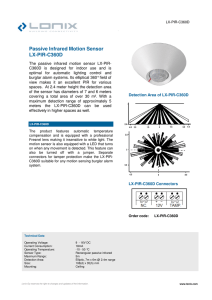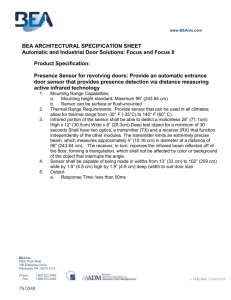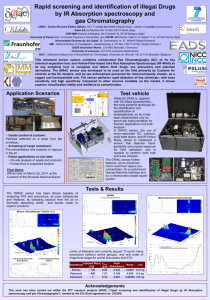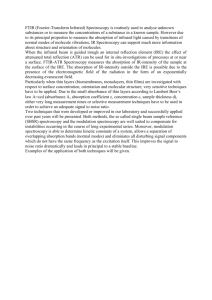Infrared overtone spectroscopy of ammonia
advertisement
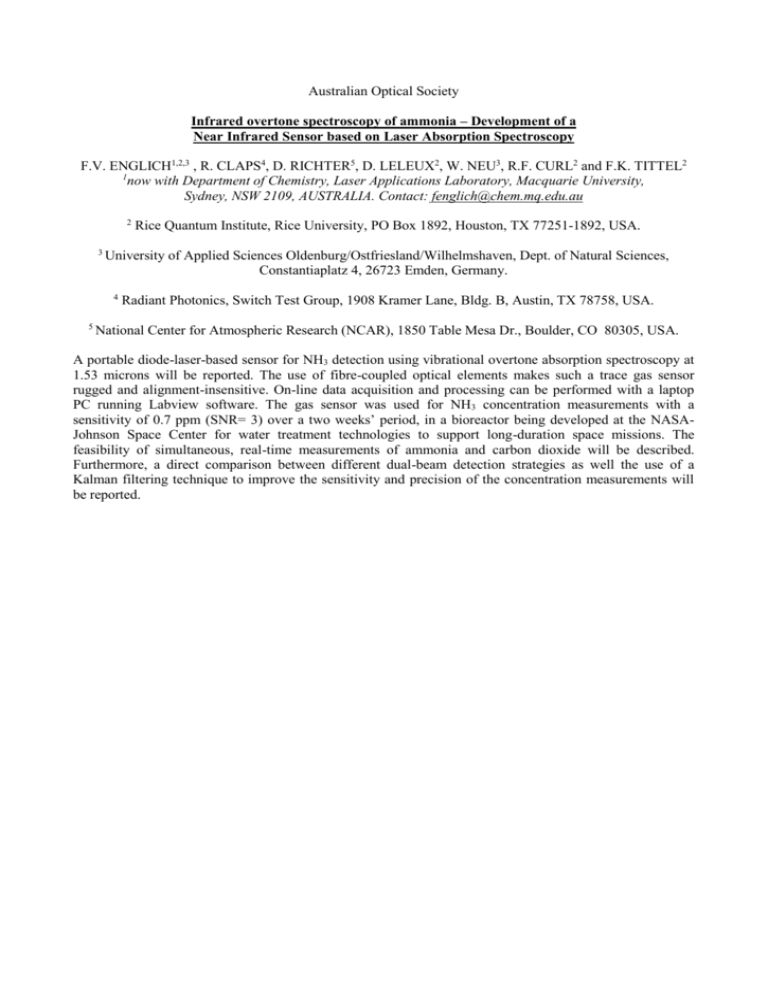
Australian Optical Society Infrared overtone spectroscopy of ammonia – Development of a Near Infrared Sensor based on Laser Absorption Spectroscopy F.V. ENGLICH1,2,3 , R. CLAPS4, D. RICHTER5, D. LELEUX2, W. NEU3, R.F. CURL2 and F.K. TITTEL2 1 now with Department of Chemistry, Laser Applications Laboratory, Macquarie University, Sydney, NSW 2109, AUSTRALIA. Contact: fenglich@chem.mq.edu.au 2 3 University of Applied Sciences Oldenburg/Ostfriesland/Wilhelmshaven, Dept. of Natural Sciences, Constantiaplatz 4, 26723 Emden, Germany. 4 5 Rice Quantum Institute, Rice University, PO Box 1892, Houston, TX 77251-1892, USA. Radiant Photonics, Switch Test Group, 1908 Kramer Lane, Bldg. B, Austin, TX 78758, USA. National Center for Atmospheric Research (NCAR), 1850 Table Mesa Dr., Boulder, CO 80305, USA. A portable diode-laser-based sensor for NH3 detection using vibrational overtone absorption spectroscopy at 1.53 microns will be reported. The use of fibre-coupled optical elements makes such a trace gas sensor rugged and alignment-insensitive. On-line data acquisition and processing can be performed with a laptop PC running Labview software. The gas sensor was used for NH3 concentration measurements with a sensitivity of 0.7 ppm (SNR= 3) over a two weeks’ period, in a bioreactor being developed at the NASAJohnson Space Center for water treatment technologies to support long-duration space missions. The feasibility of simultaneous, real-time measurements of ammonia and carbon dioxide will be described. Furthermore, a direct comparison between different dual-beam detection strategies as well the use of a Kalman filtering technique to improve the sensitivity and precision of the concentration measurements will be reported.
